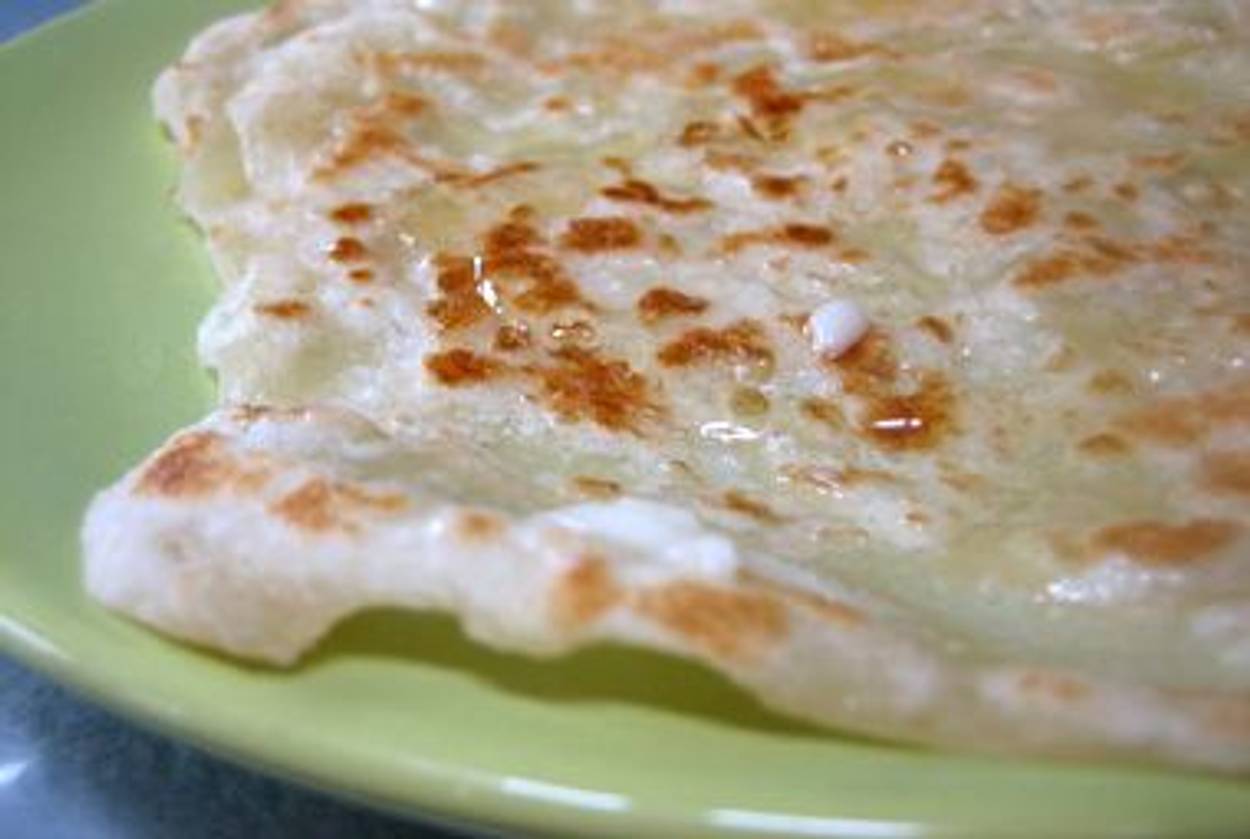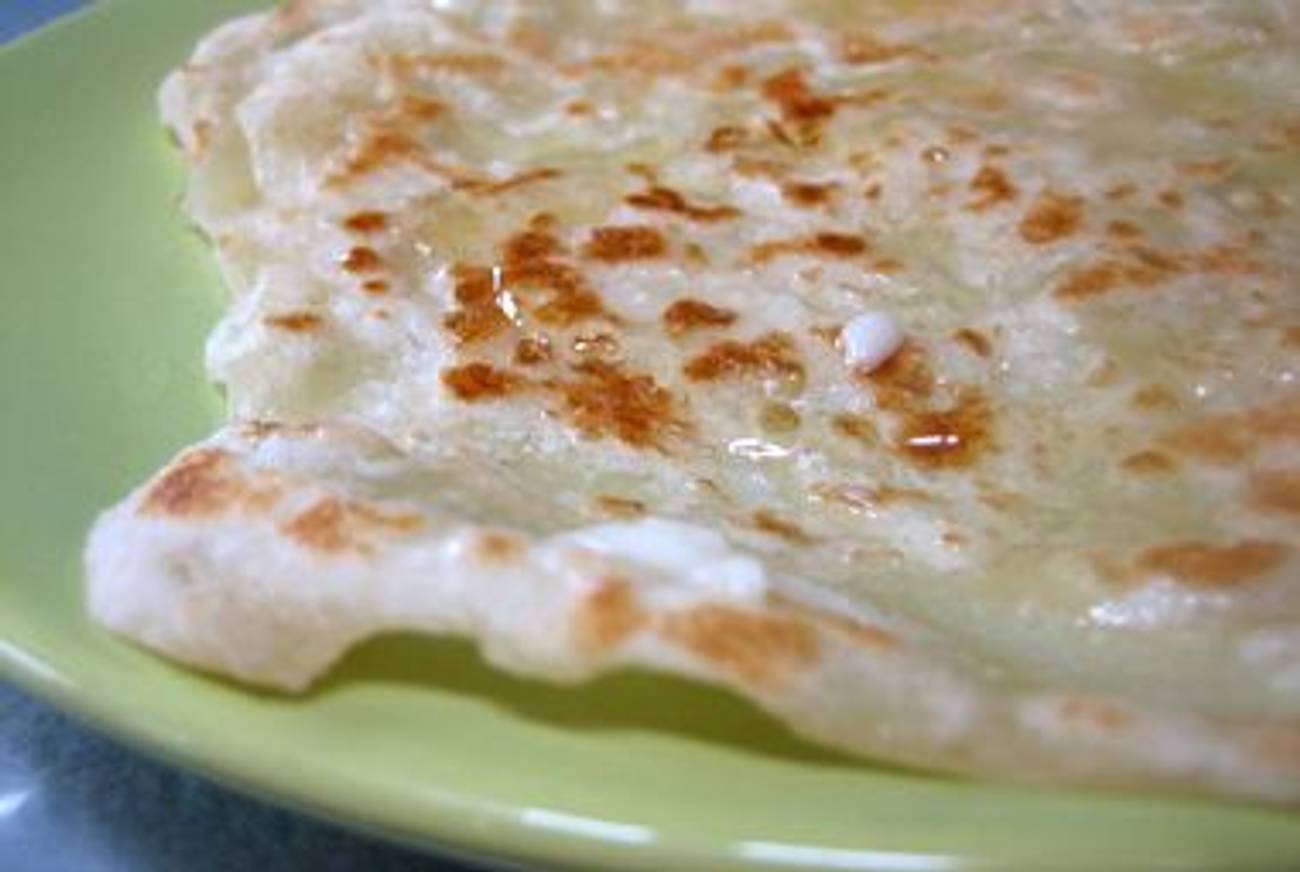It Is Risen
At the end of Passover festival known as Mimouna, Moroccan Jews return to yeasty treats in grand style




Many Jews will mark the end of Passover unceremoniously, with a slice or pizza or a piece of toast. Yet for Moroccan Jews, and increasingly for other Jews as well, the transition back to eating bread and other yeasty foods is celebrated in grand style with a feast known as Mimouna.
Traditionally, Mimouna is celebrated in Moroccan homes after sundown on the last day of Passover with a sumptuous spread piled high with sweet delectables, including stuffed dates, candies, brightly colored jams made of carrots, beets, or citrus fruits (known as mazune), and zabane (almond nougat). Most importantly, mufleta, thin pancakes doused in honey, are eaten with abandon. Thus in a similar way to how Yom Kippur is ended with an elaborate breakfast, on Mimouna tearing into a plate of freshly baked food signals the end of matzo-filled days and the start of something new.
The Mimouna table is not set as usual but is covered with “an array of symbols that are basically variations on a theme,” explains the Israeli historian Yigal Bin-Nun. For example, some families display a whole fish on the Mimouna table—even alive, swimming in a bowl of water—as a sign of good fortune, and also because the holiday is said to fall on the day when God parted the Red Sea for the Israelites to cross to freedom. Foods are often served in numerical groupings, such as seven green pea pods dotting a plate of flour to symbolize fertility and renewal. Things symbolizing luck are central to Mimouna, with Hanukkah gelt-like gold coins strewn across the table. The celebration continues the next day with outdoor picnics and celebrations.
Though the festival’s name is often thought to refer to the 12th-century’s Rabbi Maimon (the father of Maimonides), Bin-Nun has uncovered folkloristic songs and historic sources that link it to the rituals of the Gnawa, a Sufi sect in Morocco whose adherents pray yearly through songs, parades, and ecstatic dancing to the goddess of luck, Mimouna. Sure enough, during Jewish Mimouna celebrations, “songs are sung in honor of ‘Lady Luck.’ One of them is ‘Lala mimouna/mbarka masuda,’ which means ‘Lady Mimouna/lucky and blessed.’ ” In addition, the Arabic word mimoun means luck or good fortune.
While celebrated for centuries in Morocco, the holiday was popularized and even politicized in Israel, particularly in the 1980s, when Ashkenazi politicians publicly attended Mimouna celebrations in order to curry favor with voters of Moroccan descent, as Rachel Sharaby explains in The Mimuna Holiday: From the Periphery to the Center, which was published in Hebrew last year. Ashkenazim were not always so eager to join in the fun. In the early years of Israel’s existence, Ashkenazim saw the celebrations as backward and out of step with the new state’s spirit.
Feelings toward the holiday have mellowed, and nowadays Israelis more or less consider Mimouna a national party, and they’ll point to its celebration as an example of peaceful relations not only between Sephardim and Ashkenazim, but also between Muslims and Jews. After all, the culinary traditions of the holiday originate with Arab and Berber families who lent flour and yeast to their Jewish neighbors following sundown after Passover. In return, Moroccan Jews are said to have either given them the remainder of their matzo or opened their homes and eaten their first baked goods together—a tradition still maintained with Moroccan Jews leaving their front doors open on Mimouna eve.
In recent years, Mimouna celebrations have extended beyond Israel and taken hold in Paris and Amsterdam, as well as in less obvious places like Minsk. This year celebrations are also expected in Los Angeles, Montreal, New York, and Boston. But with just a bit of fresh flour, anyone can celebrate Mimouna by trying mufleta, based on the traditional Moroccan recipe.
Lara Rabinovitch received her PhD from New York University in 2012 and is a specialist in food culture and history. She currently lives in Los Angeles, where she is a writer and producer.